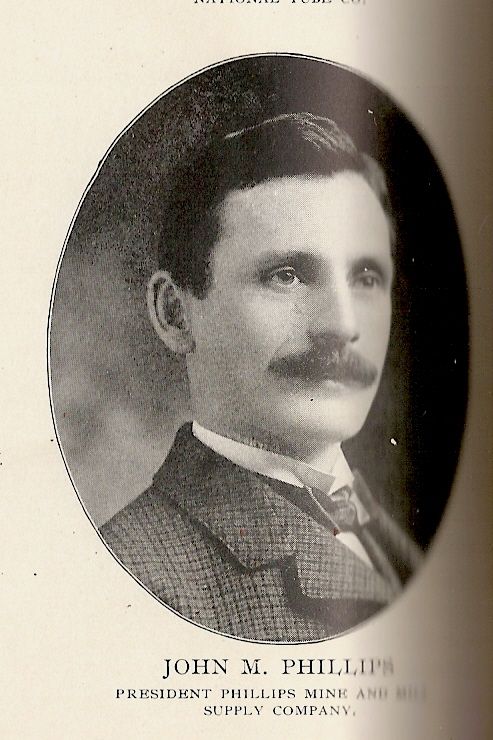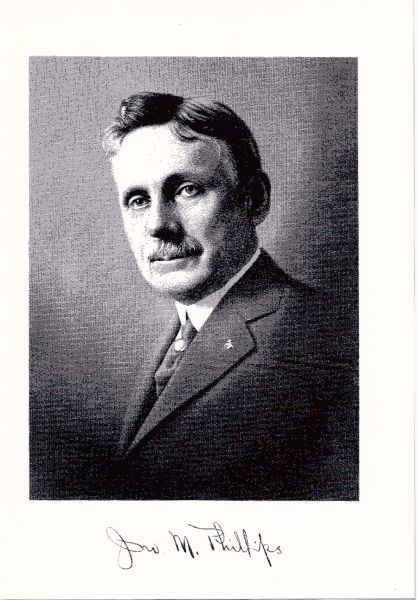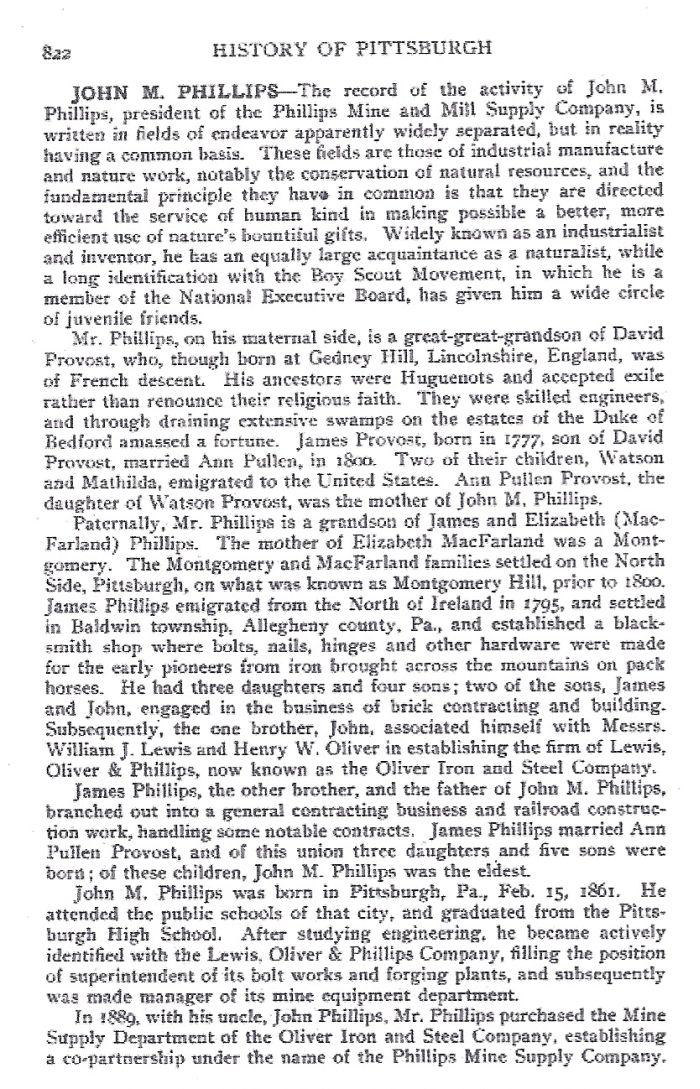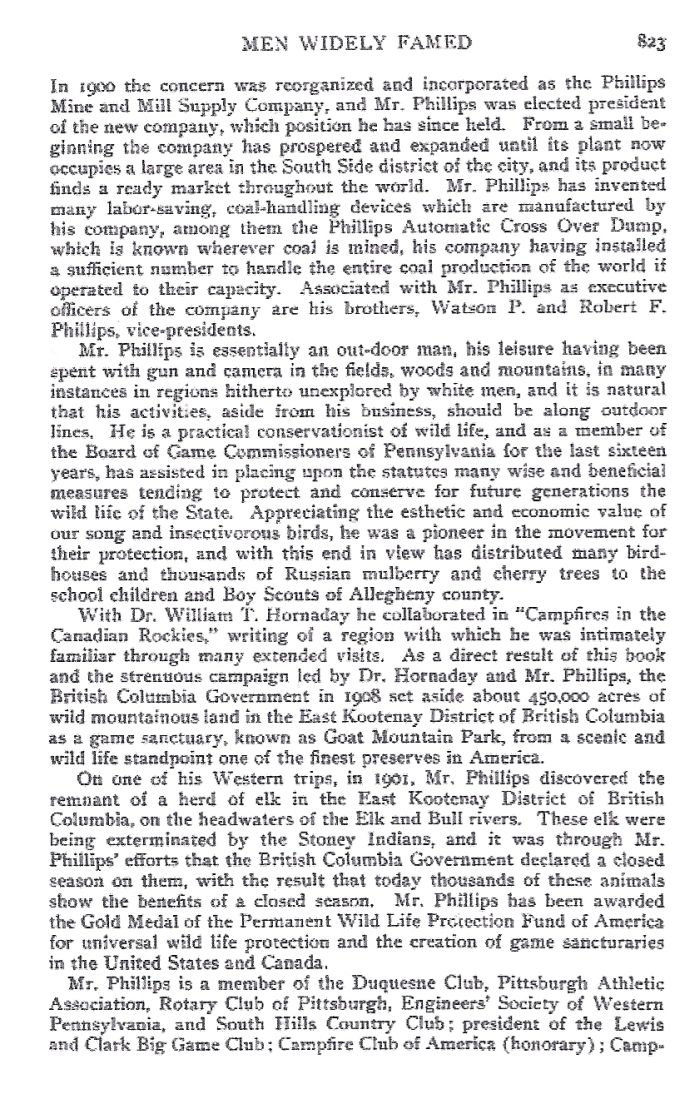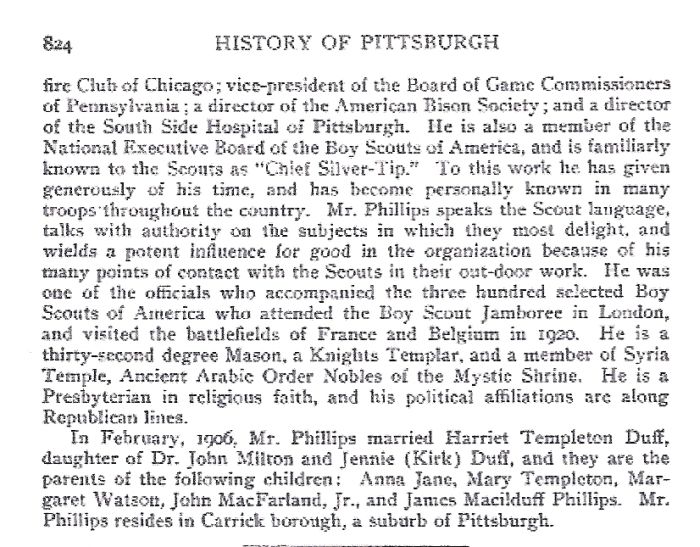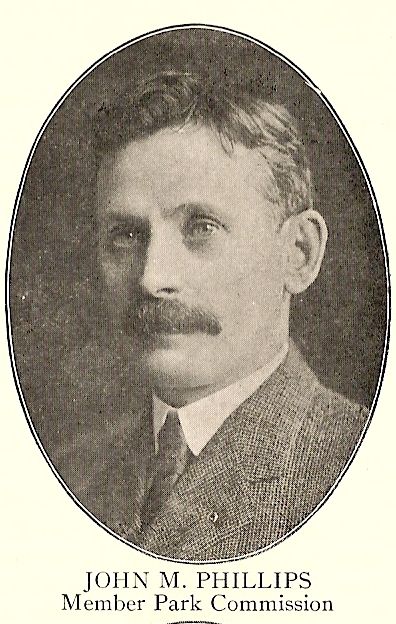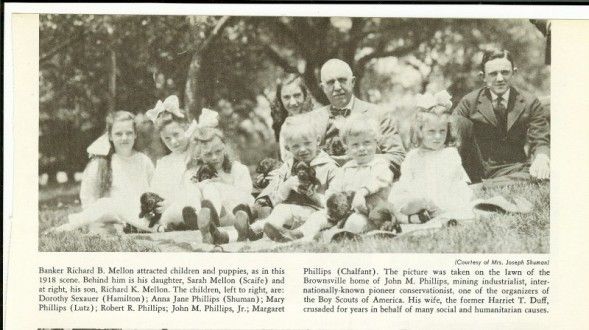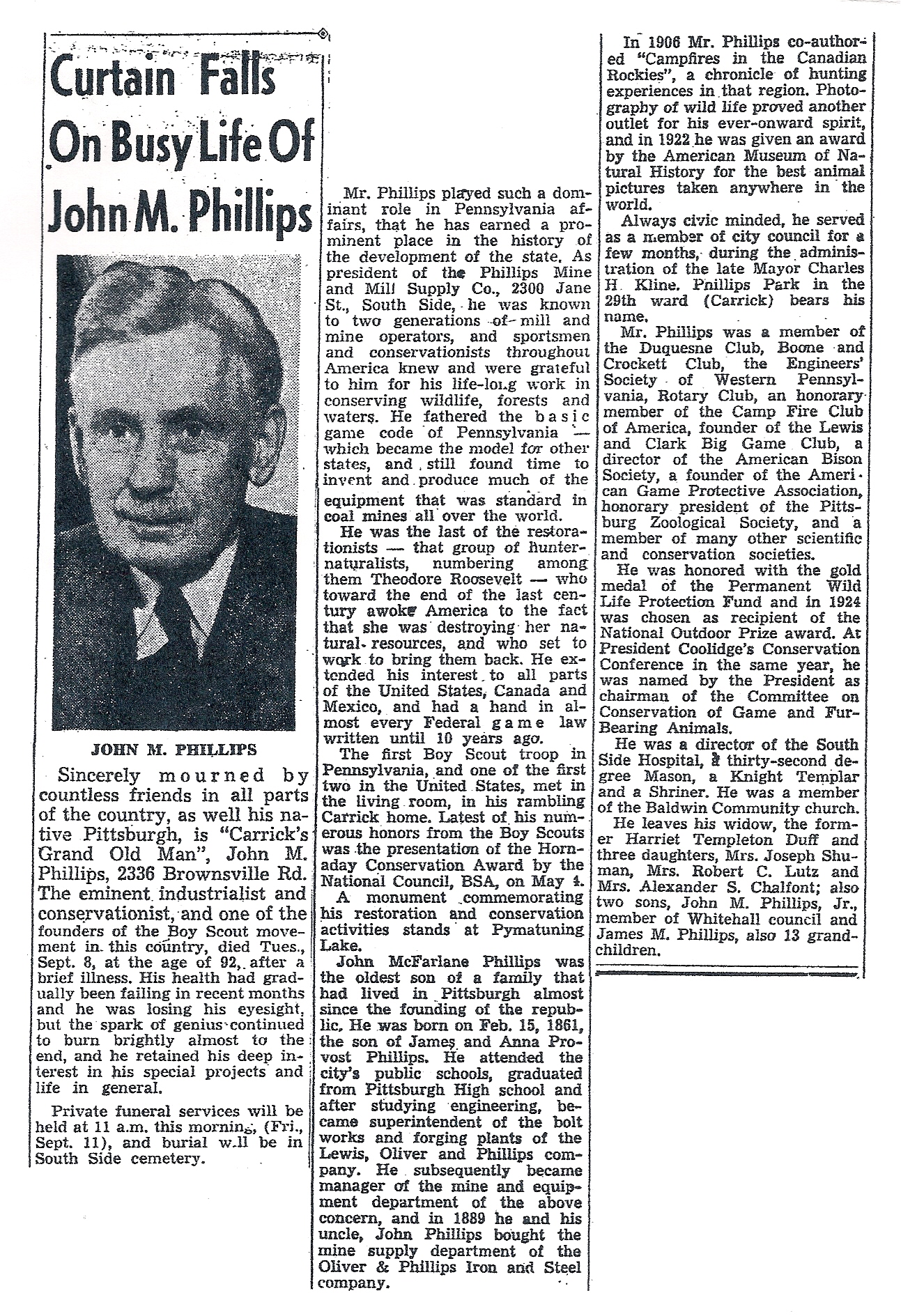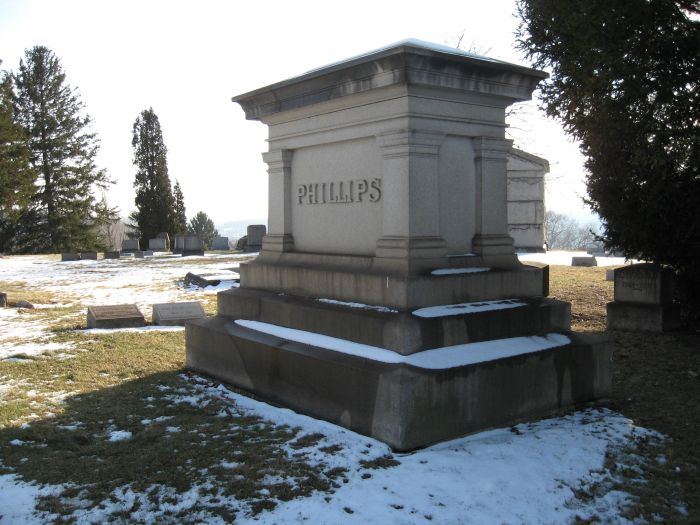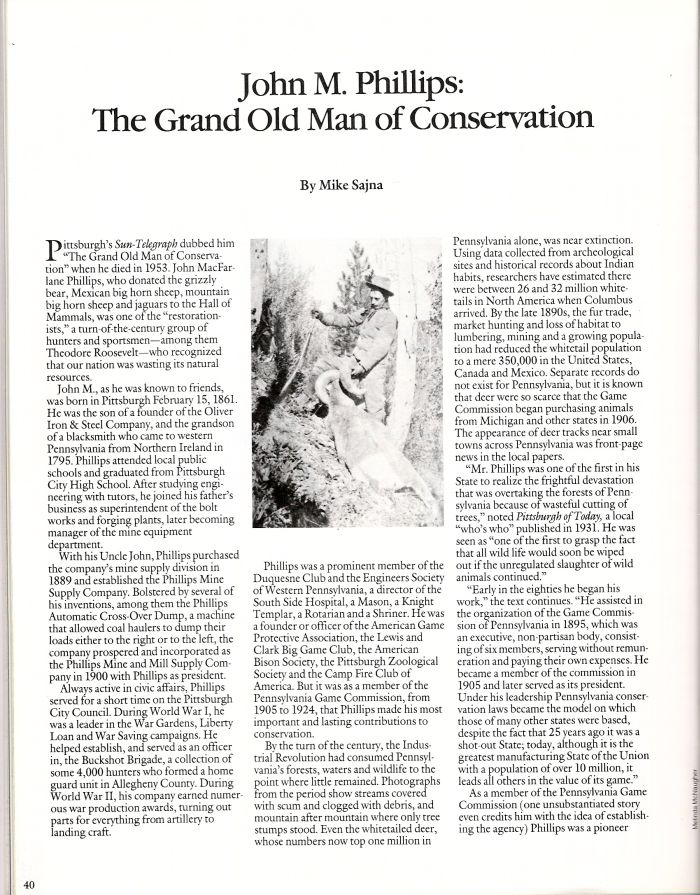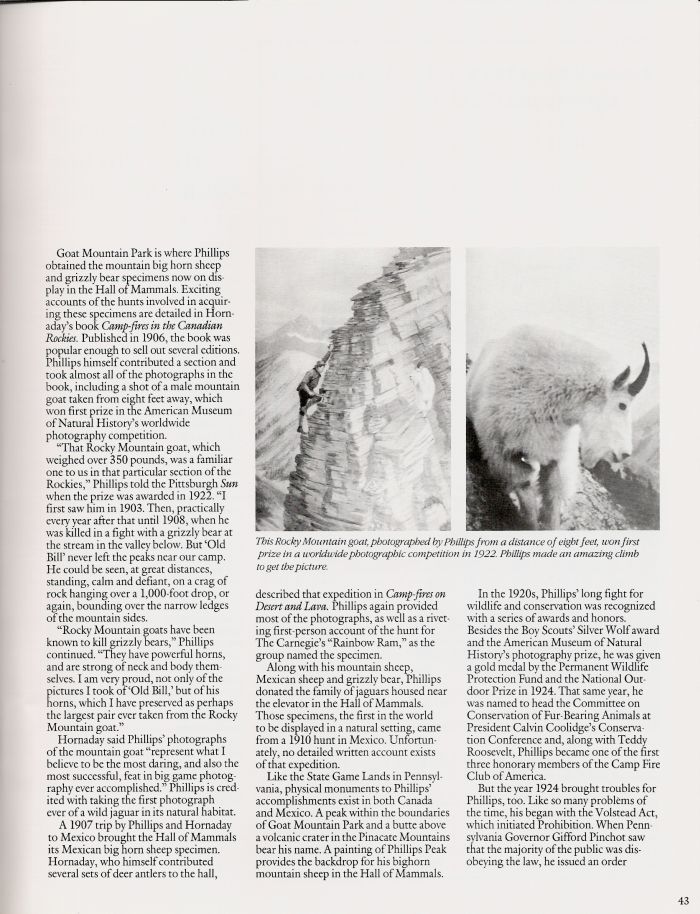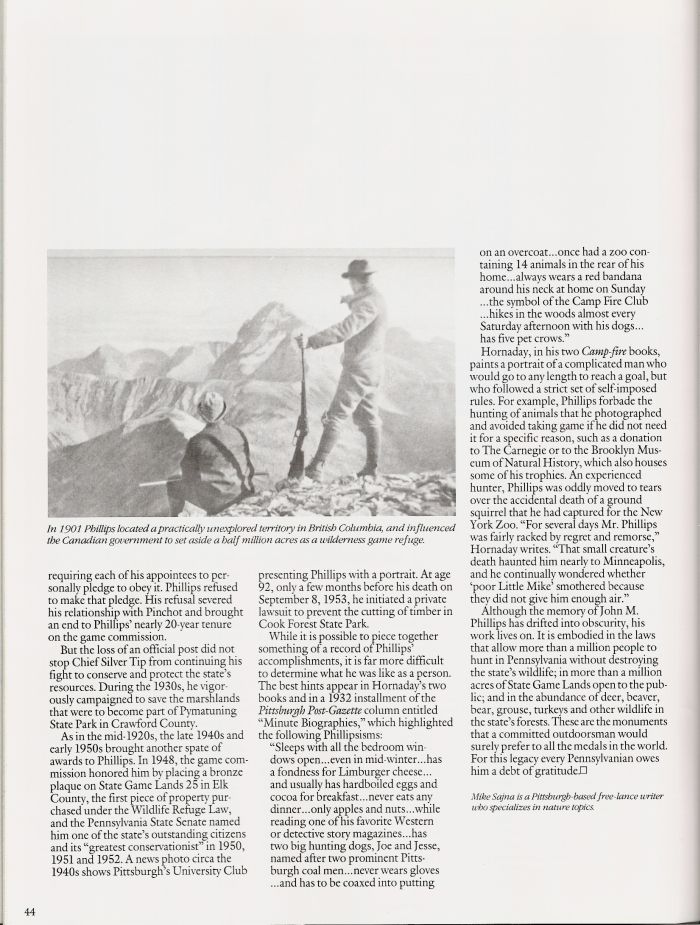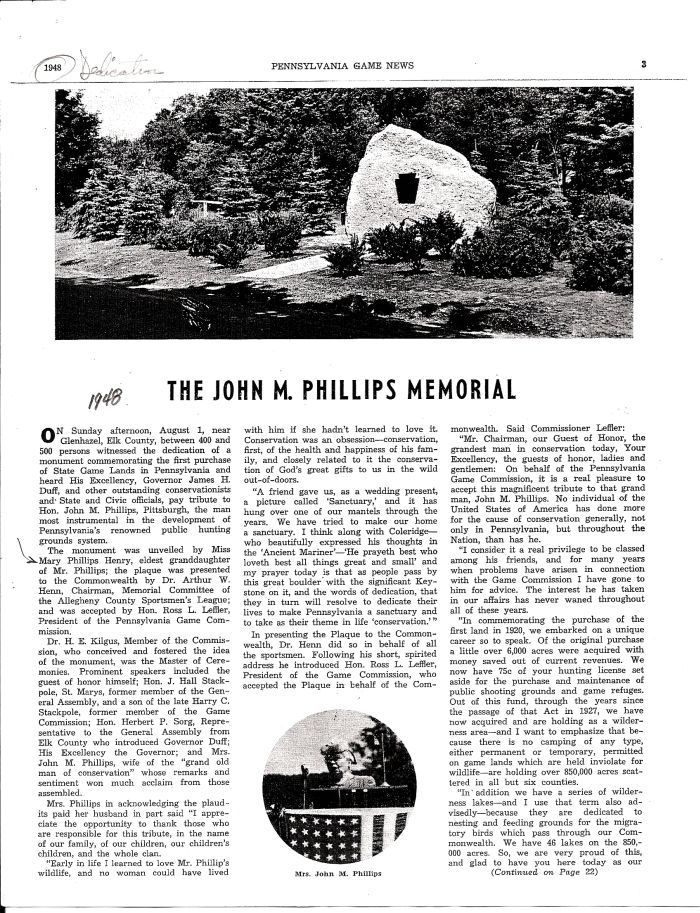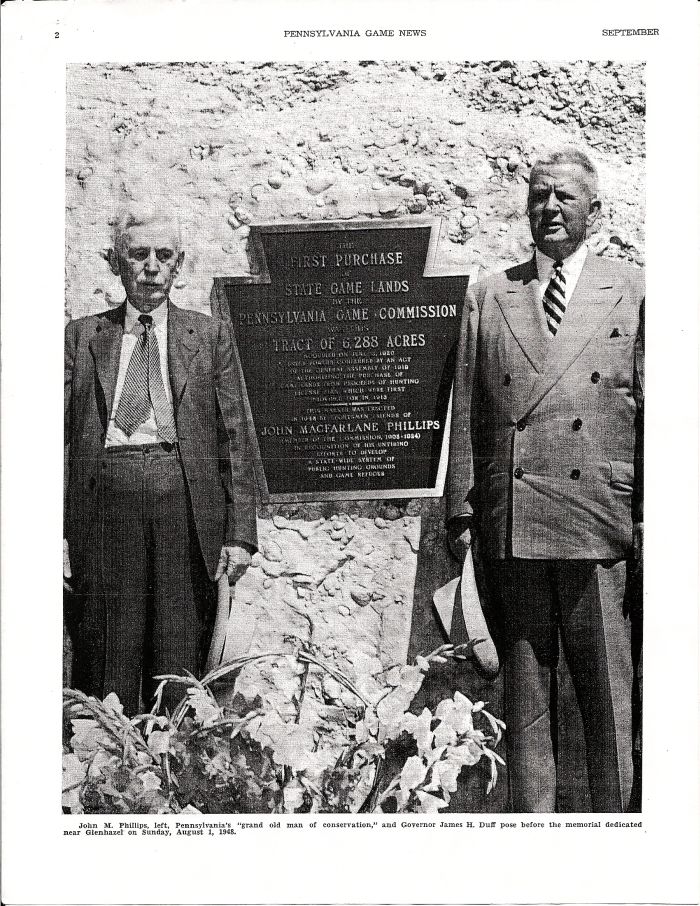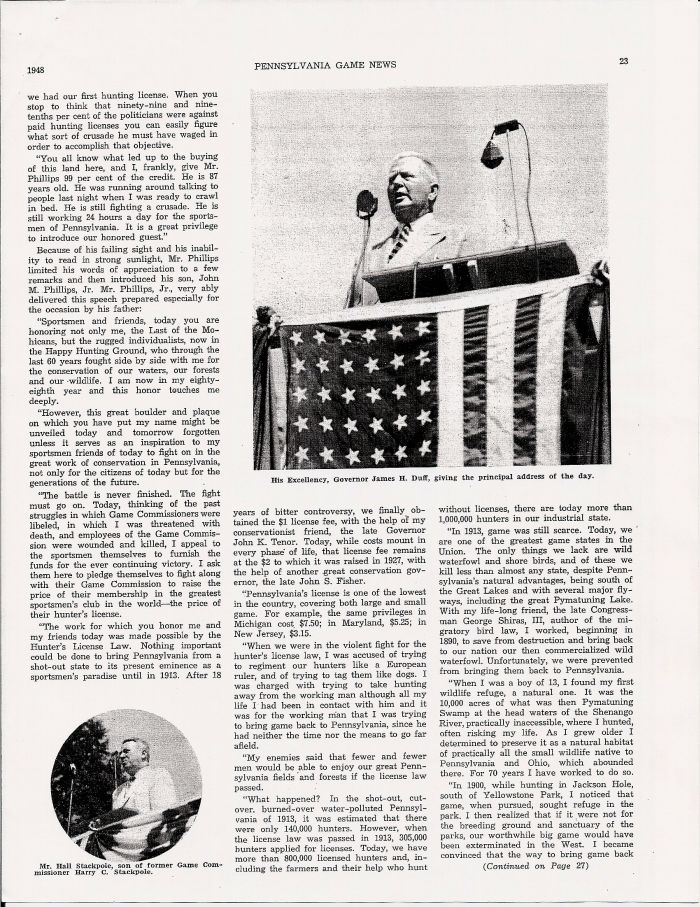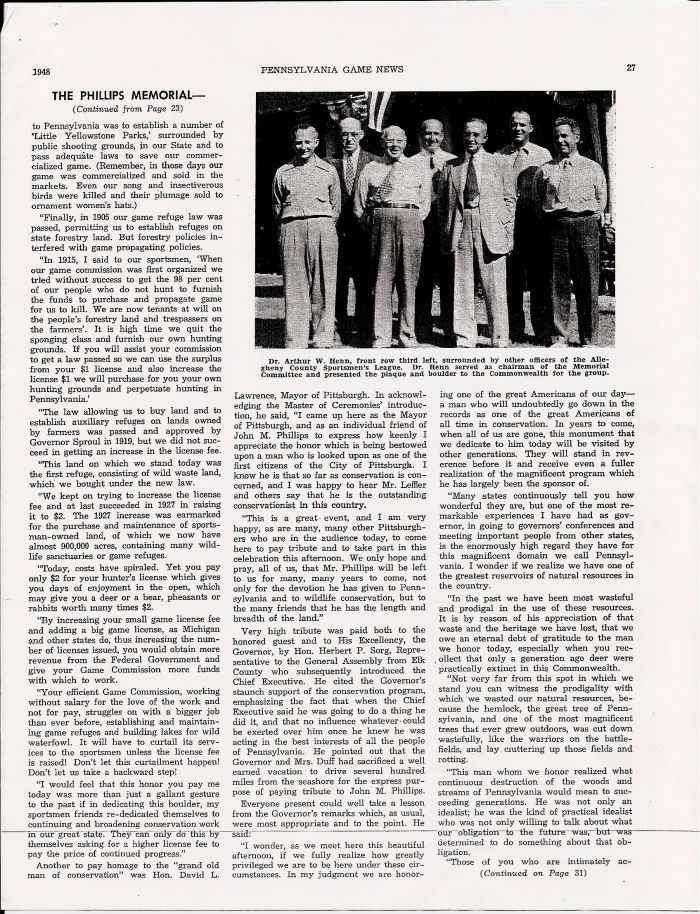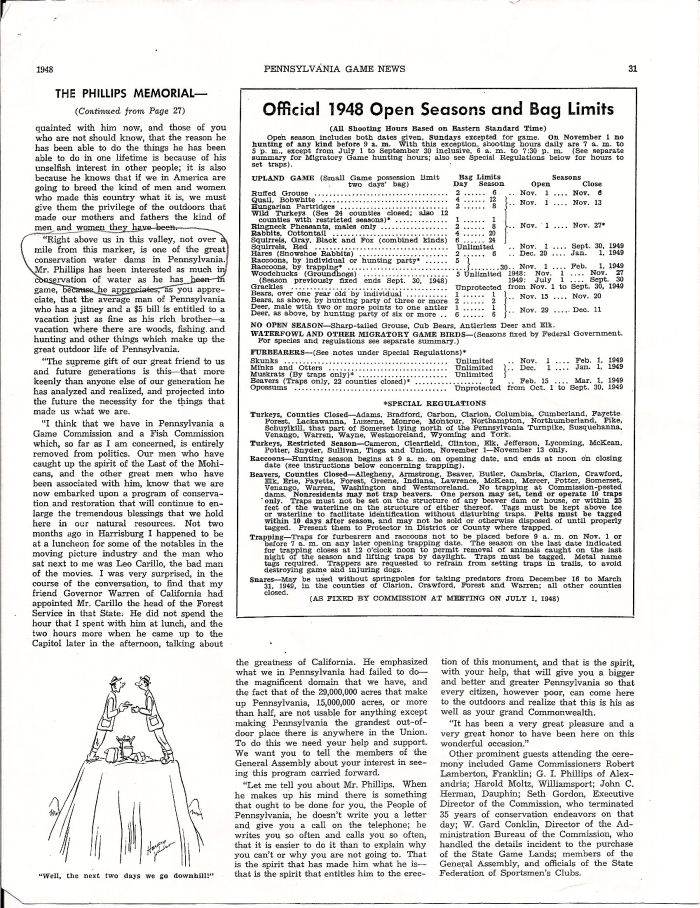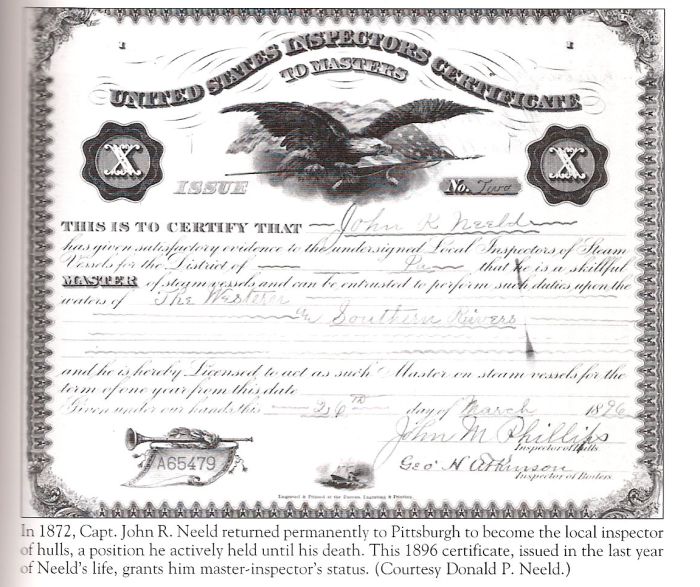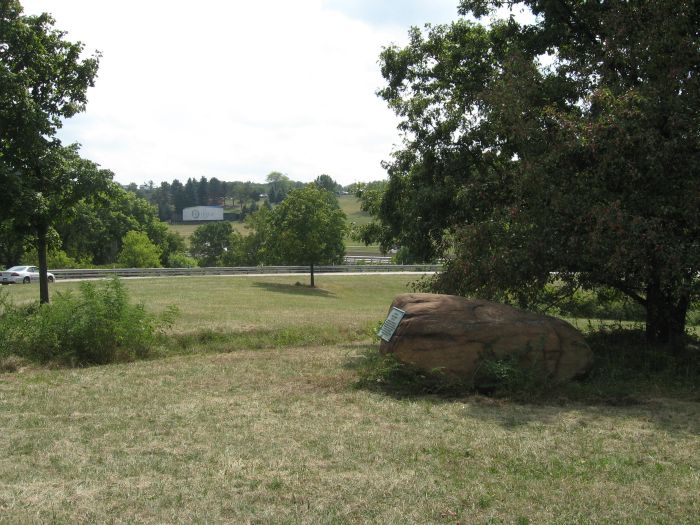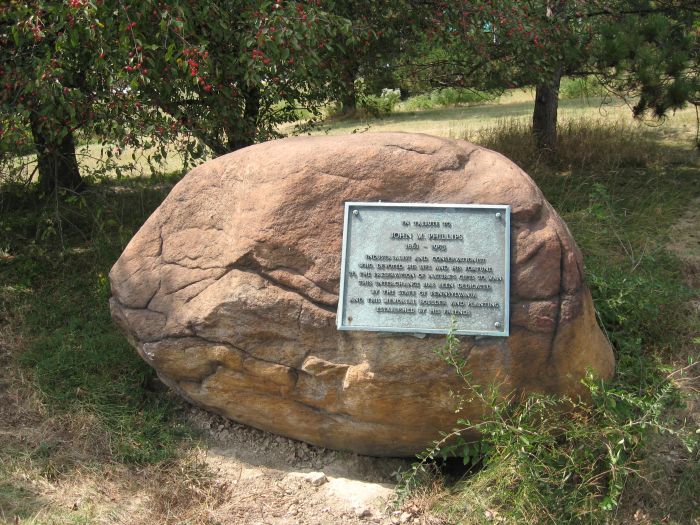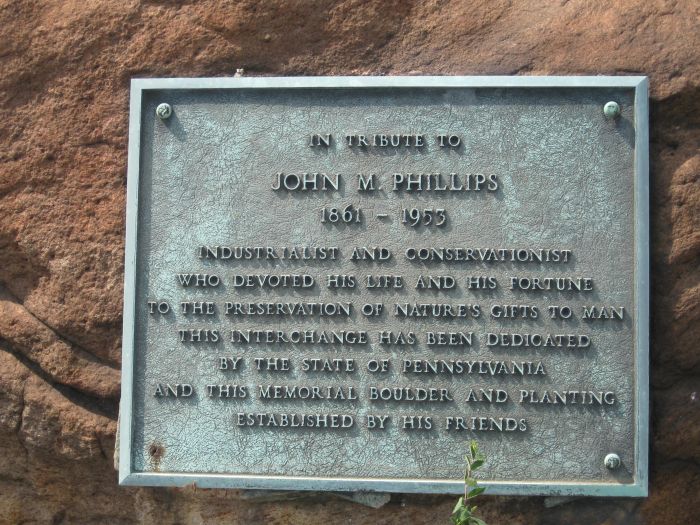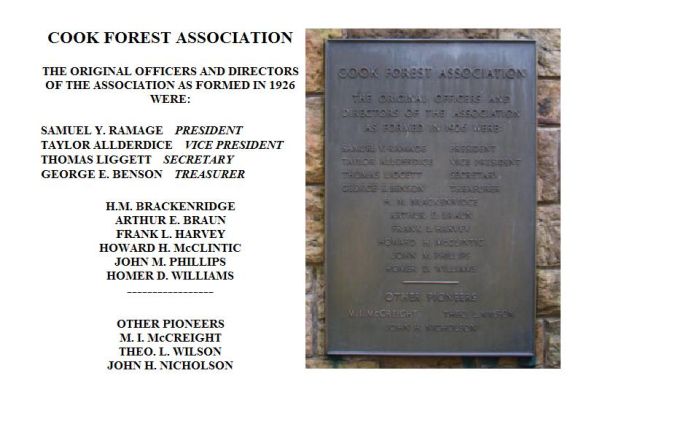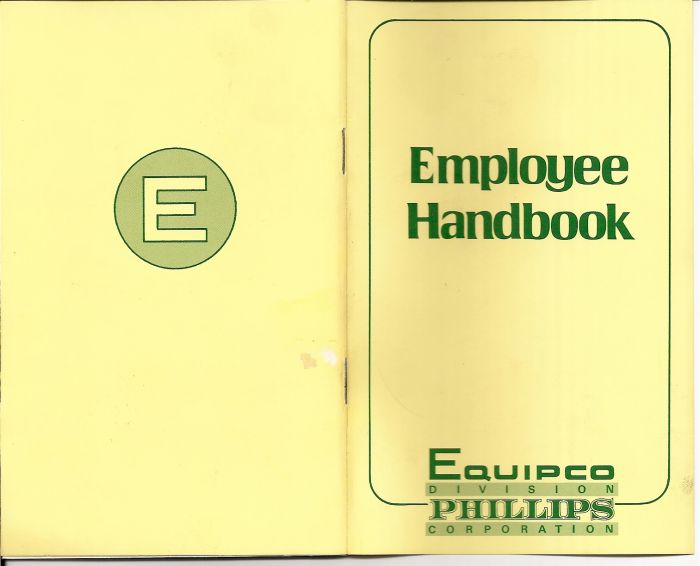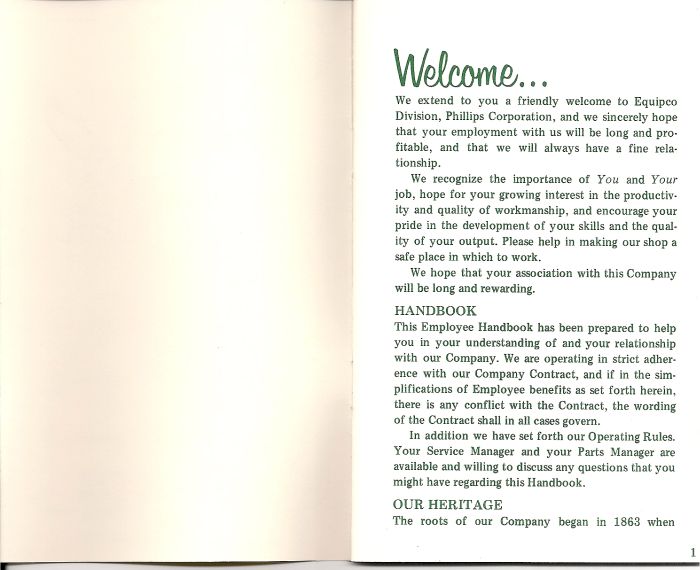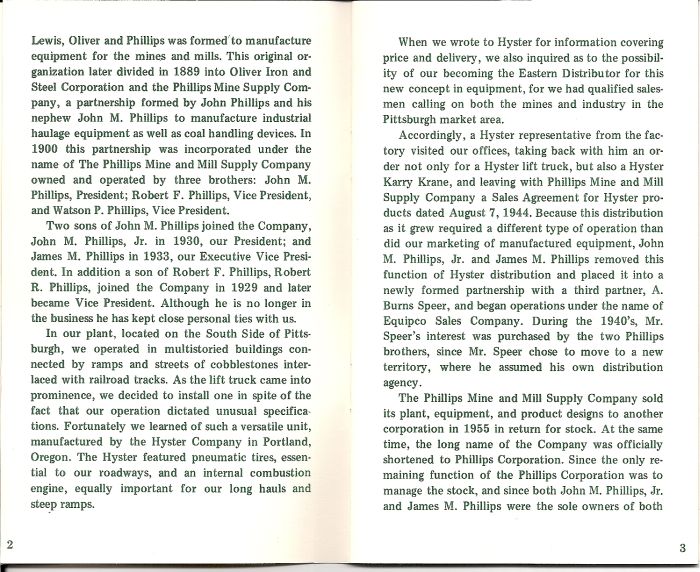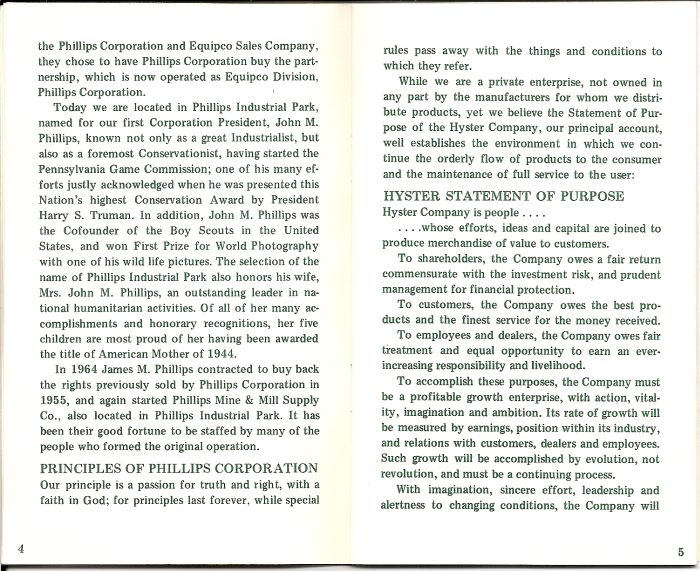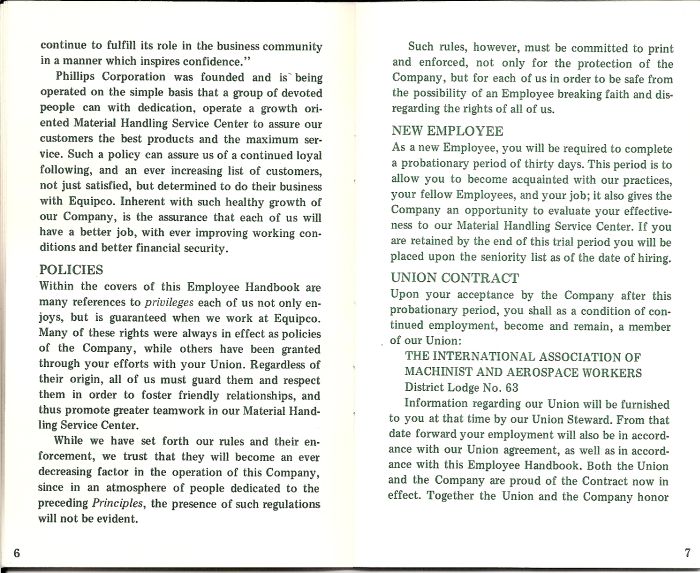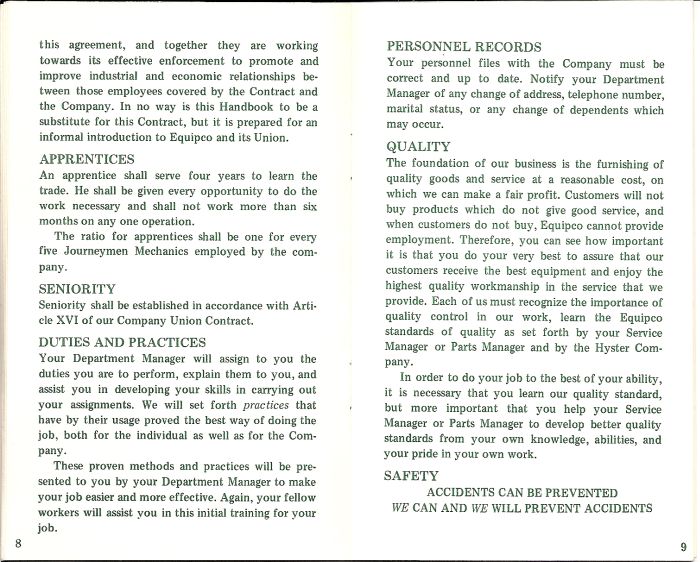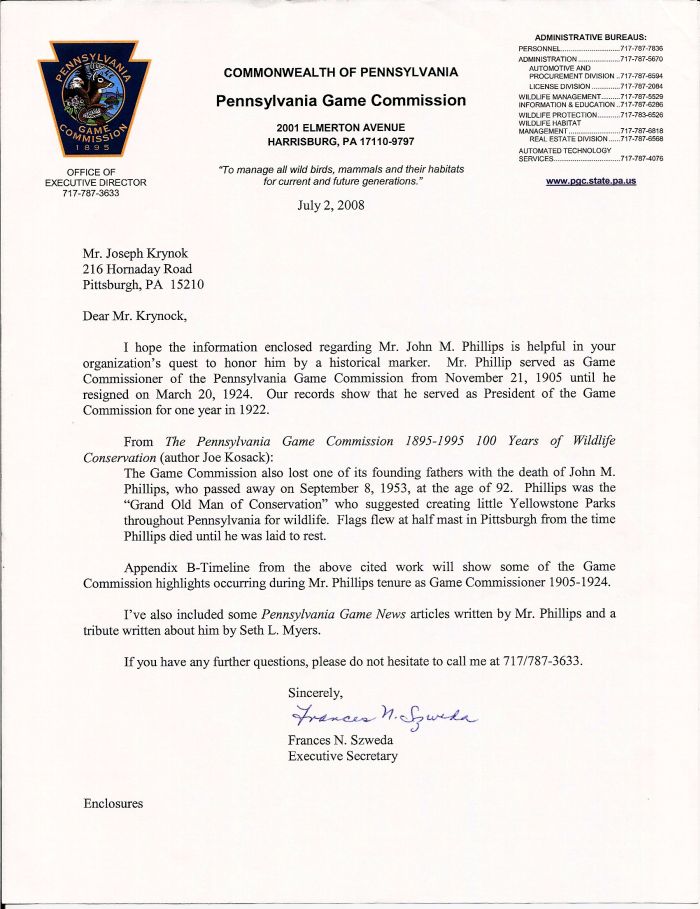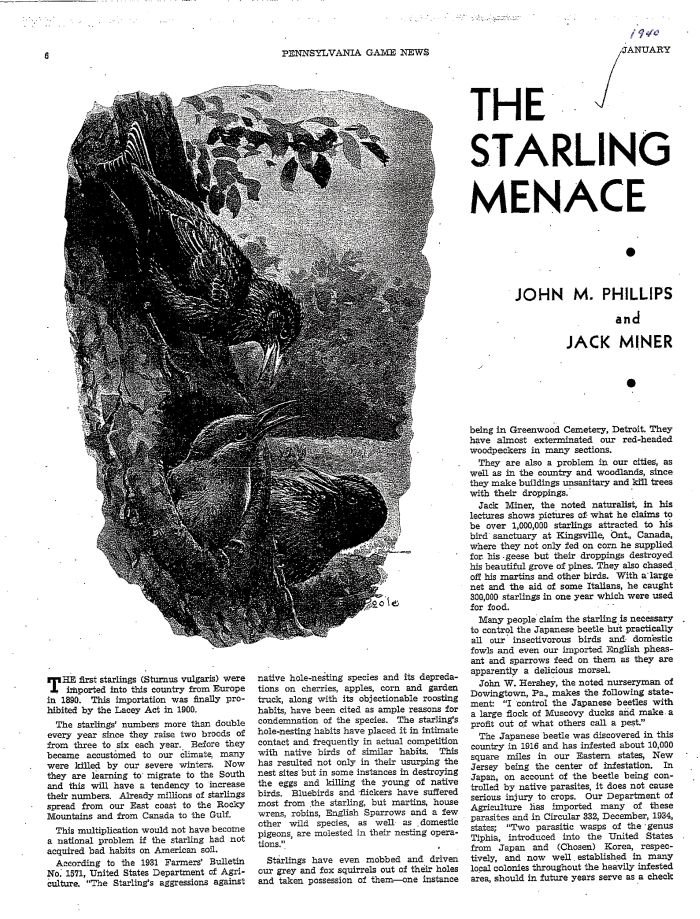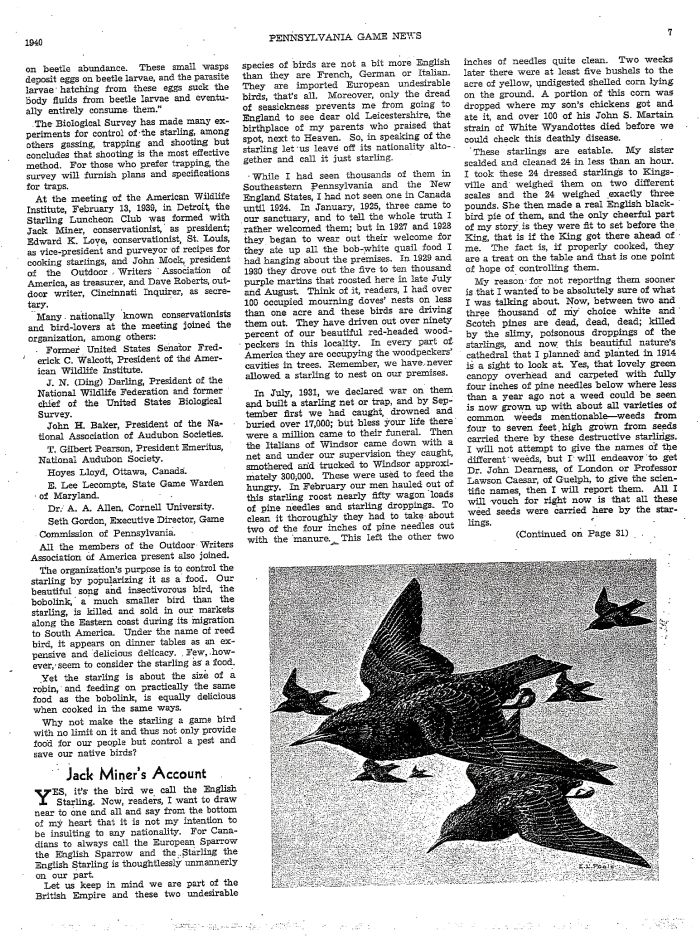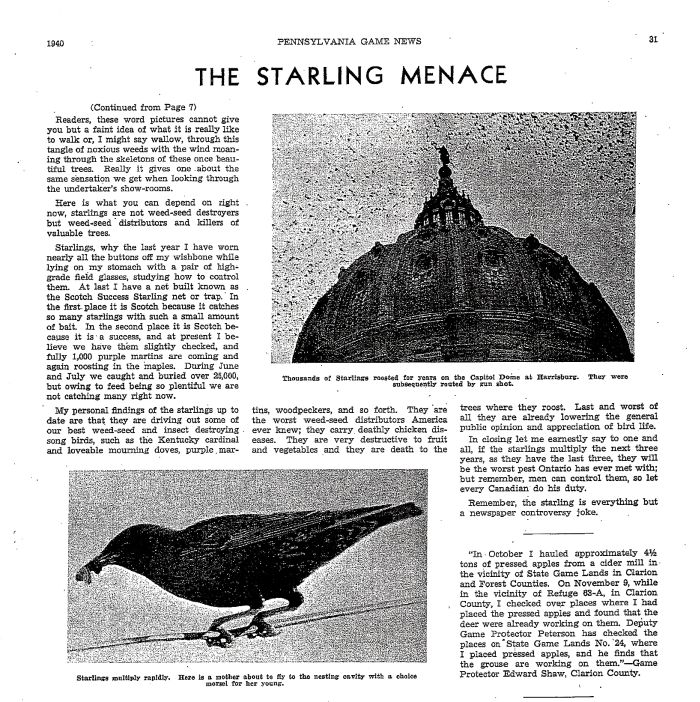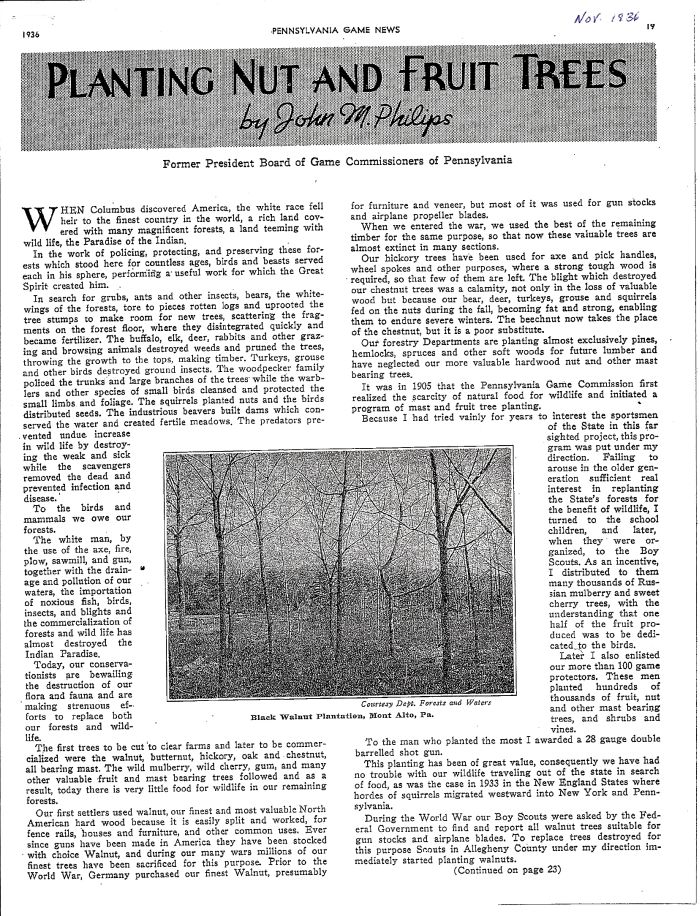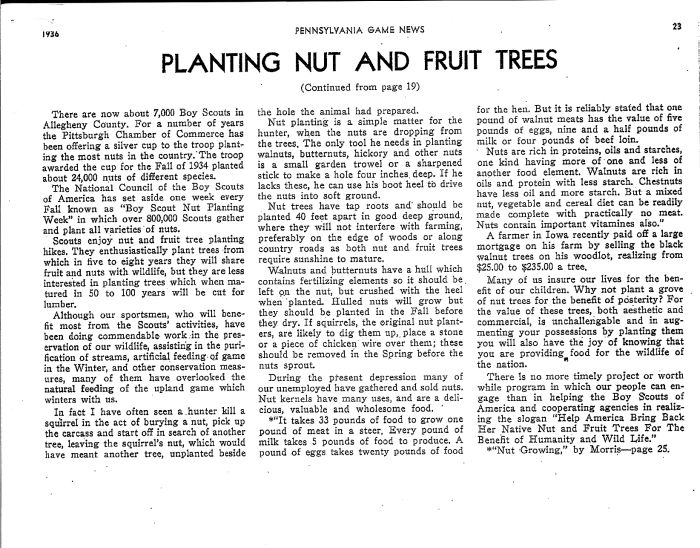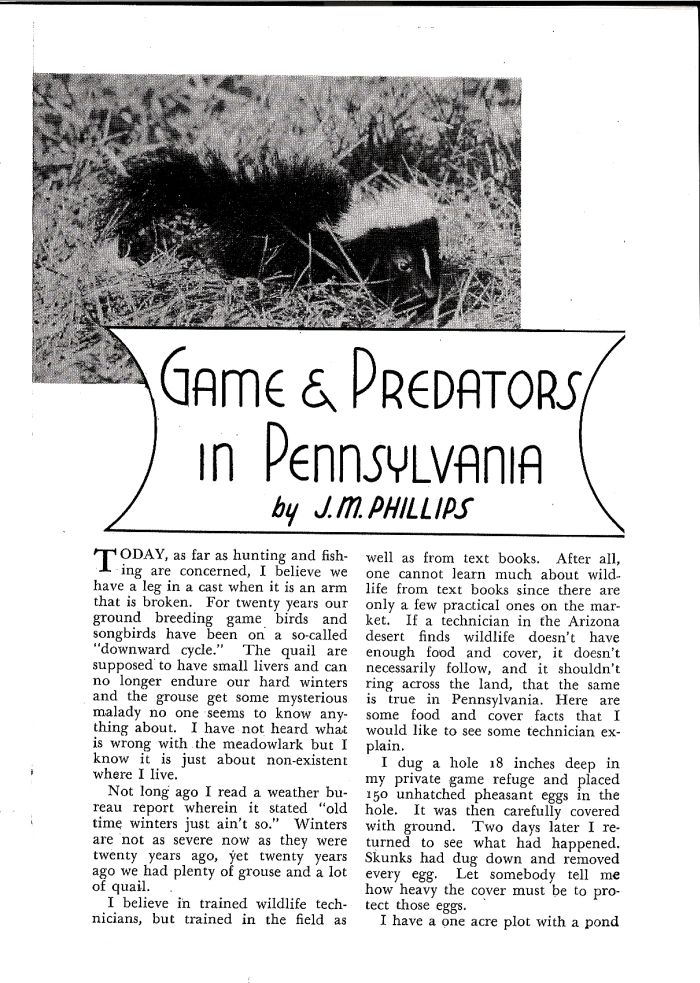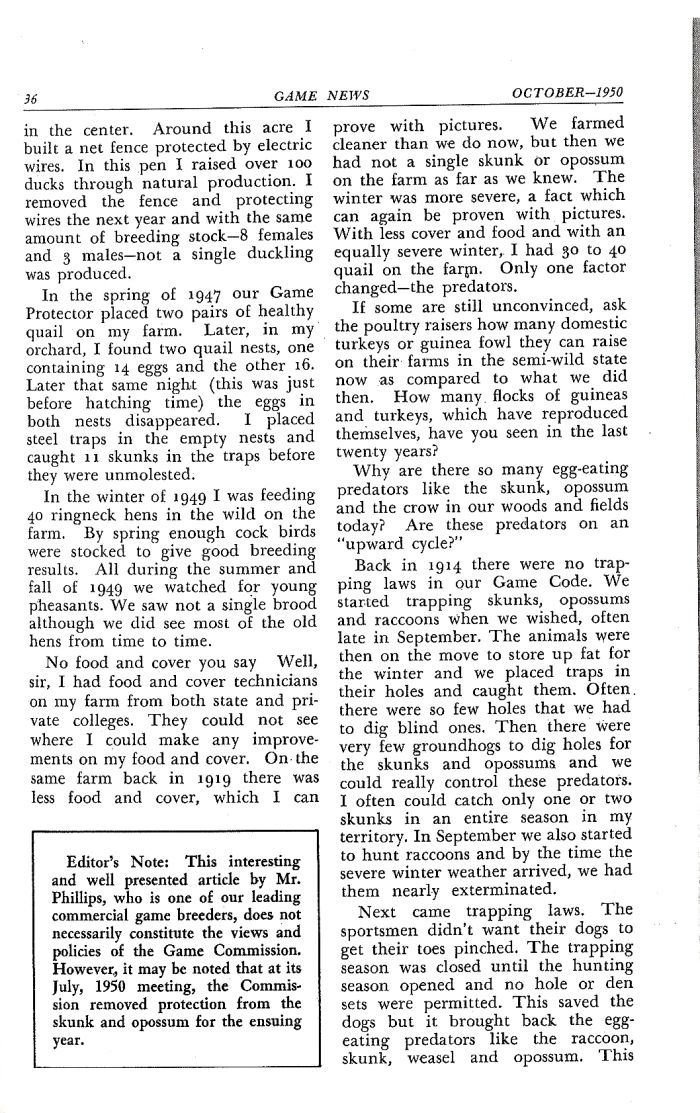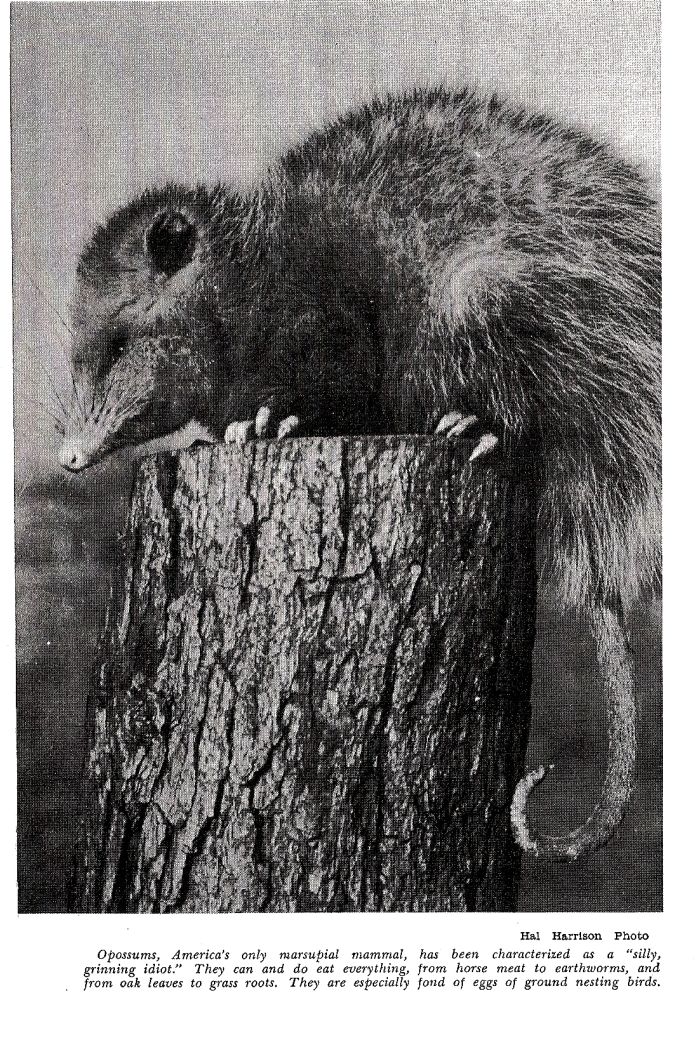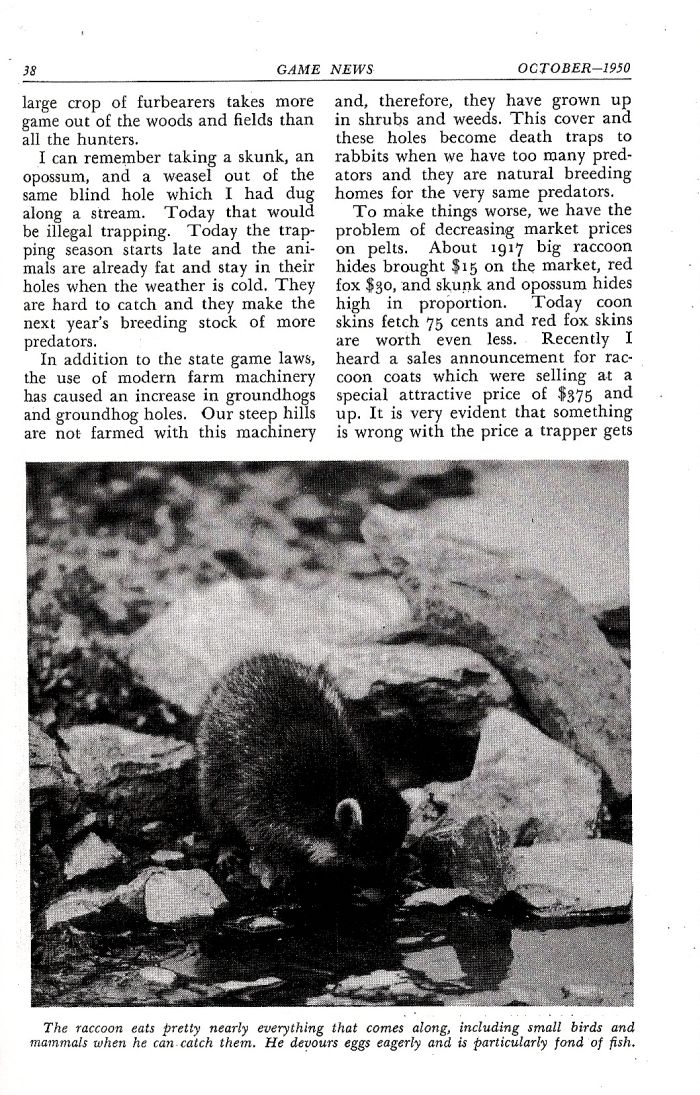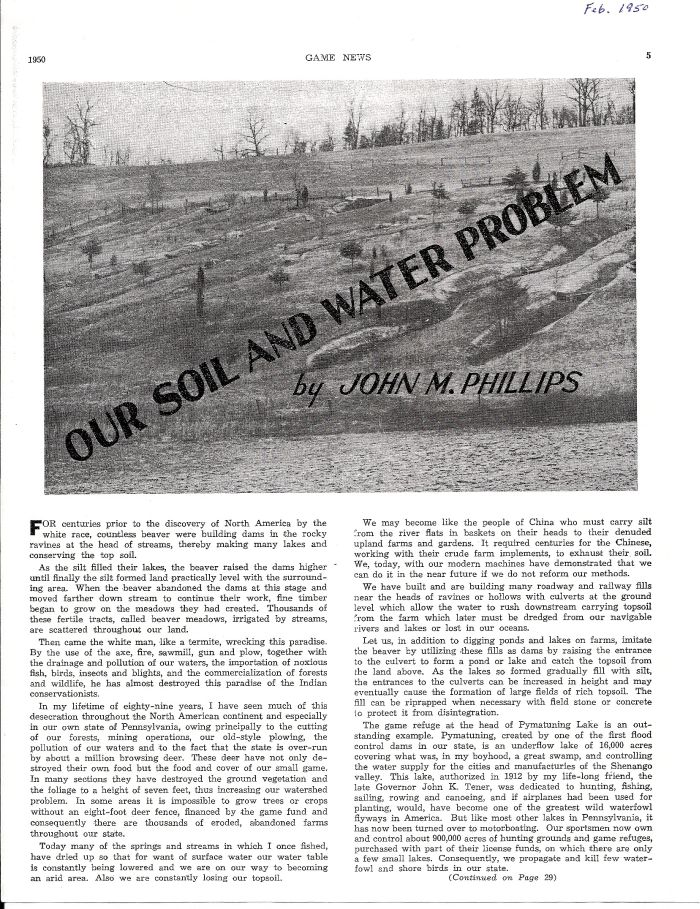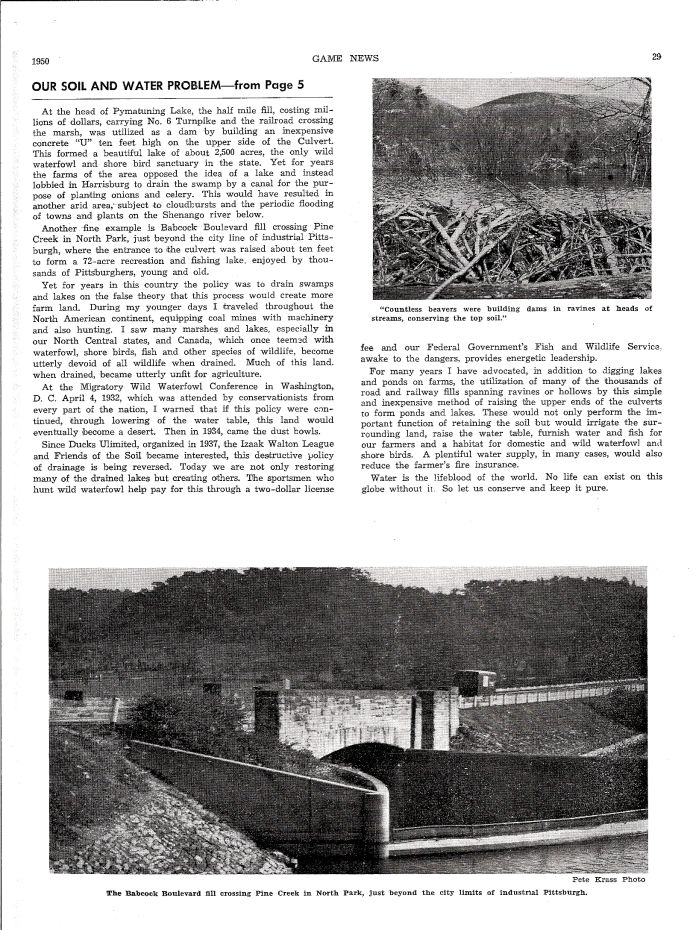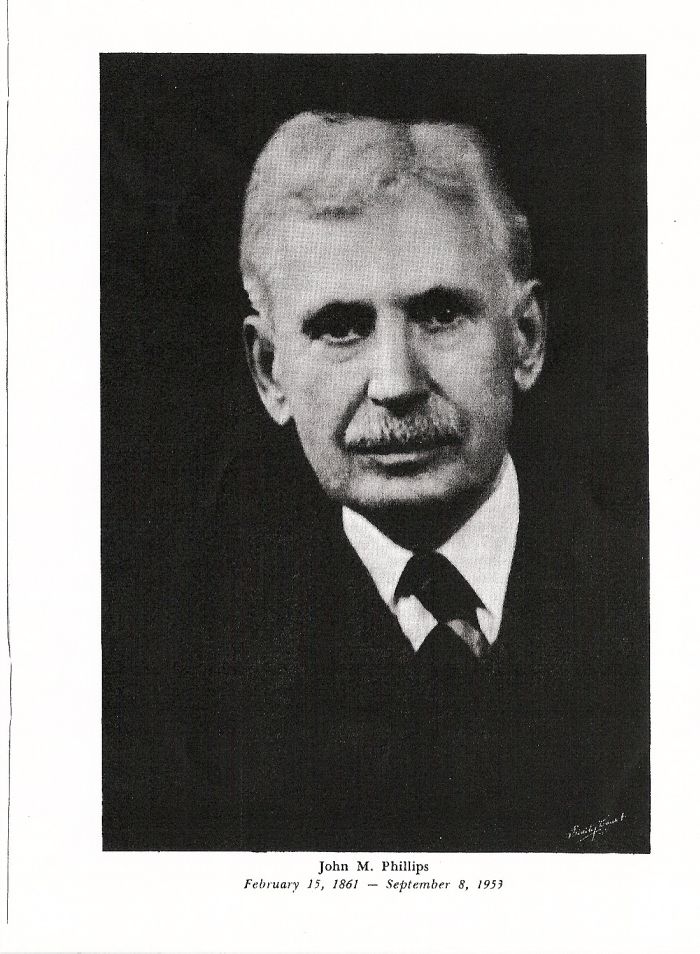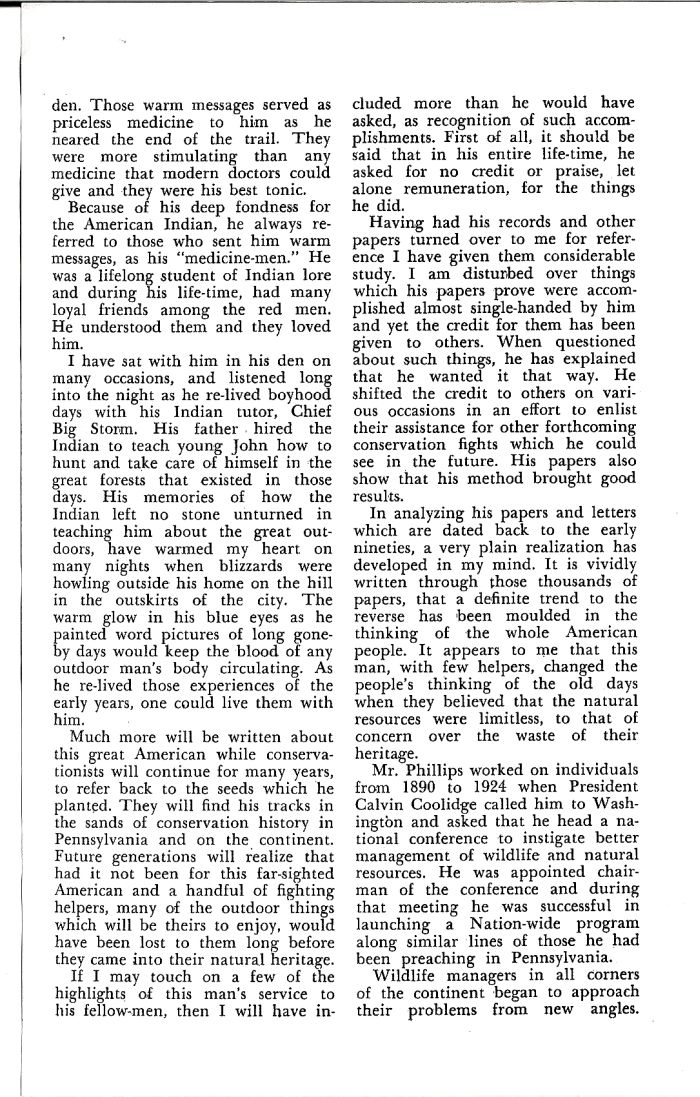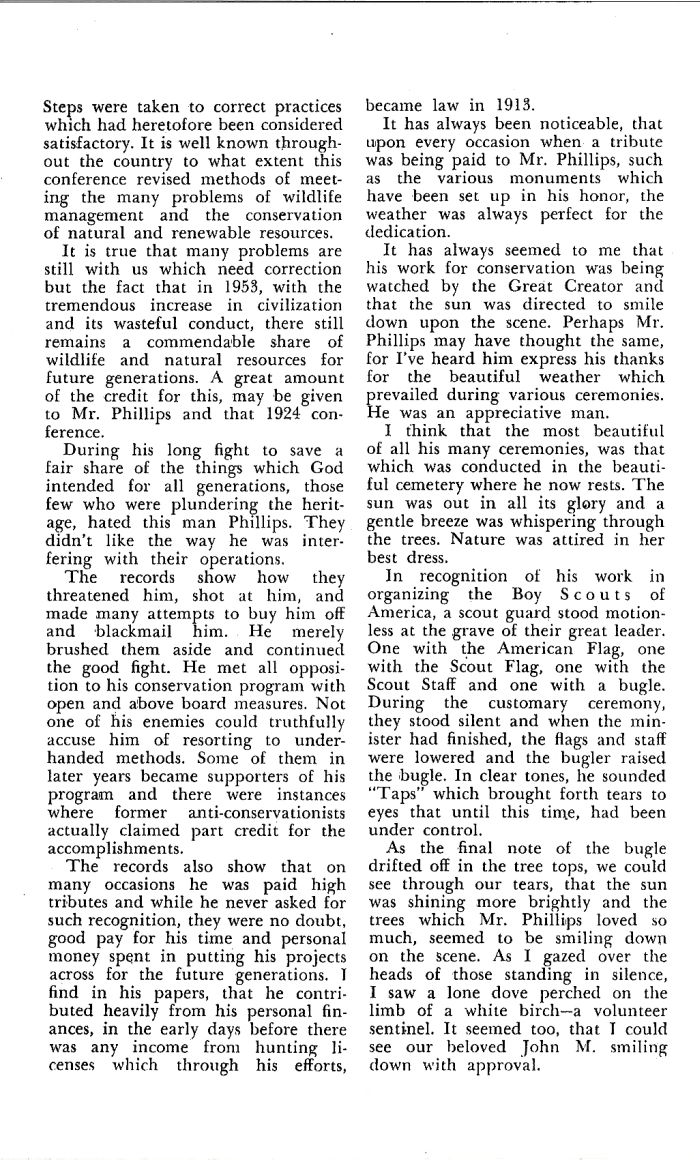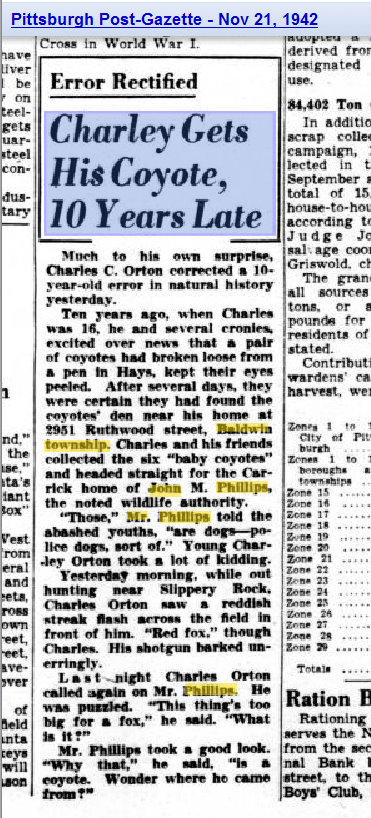John M. Phillips
Contents
- 1 John M. Phillips Early Photo
- 2 John M. Phillips Later Photo
- 3 The photo of John M. Phillips and the three page images are from:
- 4 John M. Phillips, 1914 Photo Member Borough Park Commission
- 5 This is a photo of John M. Phillips' children on the front lawn of his mansion "Impton" at 2236 Brownsville Road with Richard B. Mellon, Richard King Mellon and Sara Mellon.
- 6 John M. Phillips and Harriet Duff Phillips children's names: Anna Jane, Mary Templeton, Margaret Watson, John McFarland, Jr., James Macilduff. They also had 13 grandchildren.
- 7 John M. Phillips Obituary
- 8 John M. Phillips Headstone in Southside Cemetary located in Carrick, PA
- 9 John M. Phillips has a plaque dedicated to him in Elk County Gamelands
- 10 This is a link to the Historical Marker description
- 11 Article Pittsburgh Public Schools Web site.
- 12 Who Was Phillips Elementary School Named After?
- 13 --From the Pittsburgh City Paper, April 12-April 19, 2000
- 14 John M. Phillips had many occupations which we are unaware of until we "discover" them accidentally. Here is one such example from the Beechview History Book of John M. Phillips "Inspector of Hulls":
- 15 Recently we became aware of the fact that the entire interchange at US Routes 22/30 and PA Route 60 is dedicated to John M. Phillips. There is a plaque at the interchange stating this fact. The interchange is also the exit to Raccoon State Park. John M. Phillips was instrumental in the establishment of state parks.
- 16 In addition to this plaque there are numerous other sites we are discovering. Here is one in Cooks Forest.
- 17 Equipco is a division of Phillips Corporation. The company has an Employee Handbook in which a historical record of John Phillips' and John M. Phillips' company, his relationship with John Phillips and both of their children.
- 18 Letter of verification from the PA Game Commission
- 19 Articles written by John M. Phillips for the PA Game Commission
- 20 A Tribute to Honorable John MacFarlane Phillips by Seth L. Myers from the PA Game News October 1953
- 21 John M. Phillips was known in the area for the expert on wildlife.
- 22 There are archival documents in our state capital of Harrisburg held at the Pennsylvania State Archives. The record of these archives can be found here:
- 23 Archival Link
- 24 Additional documentation is found often. Here is a link to the Pennsylvania Federation of Sportmen's Clubs which was formed by a group that included John M. Phillips.
- 25 This is an except from The Founding Fathers web page:
- 26 DURING JOHN M. PHILLIPS' LIFETIME THE PFSC HELPED SUPPORT AND ENACT THE FOLLOWING LANDMARK ENVIRONMENTAL LEGISLATION:
John M. Phillips Early Photo
John M. Phillips Later Photo
The photo of John M. Phillips and the three page images are from:
Title: History of Pittsburgh and environs, from prehistoric days to the beginning of the American revolution Vol. 3 / By George Thornton Fleming. Author: Fleming, George Thornton, 1855-1928. Collection: Historic Pittsburgh Full-Text Collection Historic Pittsburgh Full Text Collection link
John M. Phillips, 1914 Photo Member Borough Park Commission
This is a photo of John M. Phillips' children on the front lawn of his mansion "Impton" at 2236 Brownsville Road with Richard B. Mellon, Richard King Mellon and Sara Mellon.
John M. Phillips and Harriet Duff Phillips children's names: Anna Jane, Mary Templeton, Margaret Watson, John McFarland, Jr., James Macilduff. They also had 13 grandchildren.
John M. Phillips Obituary
John M. Phillips Headstone in Southside Cemetary located in Carrick, PA
John M. Phillips has a plaque dedicated to him in Elk County Gamelands
This is a link to the Historical Marker description
Article Pittsburgh Public Schools Web site.
Phillips Elementary School article
Who Was Phillips Elementary School Named After?
--From the Pittsburgh City Paper, April 12-April 19, 2000
It' s hard to imagine two people who better embodied the principles of urban public education than John MacFarlane Phillips and Harriet Duff Phillips. She was a school board member and community activist; he once maintained a backyard zoo and had extensive experience with firearms. The two were longtime residents of Carrick, where they shared a 17-room mansion called "Impton" ... which come to think of it, wouldn't be a bad name for a school either.
John M. Phillips was an industrialist, the president of Phillips Mine and Mill Supply Company, which had a sizeable plant on the South Side. But he was best known as a hunter and conservationist. A woodsman who shared the turn-of-the-century environmental ethics of Theodore Roosevelt, Phillips helped craft Pennsylvania's game laws, which served as a model for similar restrictions adopted in other states. The new rules weren't universally beloved, however, especially by recent immigrants used to living off what they could hunt. And after 11 game wardens were shot while trying to enforce the game laws in 1905, Phillips fought for the passage of the Alien Gun Law, which prohibited non-citizens from packing heat. Phillips fought a constitutional challenge all the way to the U.S. Supreme Court and won. (It's anyone's guess where this would have gotten Phillips in his current political climate: If you hear a gun-rights supporter talking about an Alien Gun Law today, he's probably worried about losing his rights to defend himself from extraterrestrials.)
Of course, Phillips also killed lots of animals - on one occasion he gave a set of five dead jaguars to the Carnegie Museum - and he also shot a nationally famous prize-winning photograph of a mountain goat. A 1932 article in the Post-Gazette maintains that he once kept a small private zoo of 14 animals behind a house.
He also helped found the Boy Scouts of America, and was known to scouts - I'm going to insist on some decorum here, people - as "Chief Silver Tip." Harriet Phillips was even more devoted to youth. She'd grown up attending the Humboldt school - which the school bearing her own name was built to replace - and served on the city's school board for 14 years. She participated in the civic activities suitable for a woman in her station - she helped raised funds for the South Side Hospital, which her father founded, for example - but was also, a fairly progressive political voice. She agitated for women to have greater opportunity both in business and in public life and was an outspoken advocate - at least for the pre-civil rights era - for better race relations. She also helped lead the fight for a juvenile justice system that would treat young offenders more compassionately.
Such work won her awards ranging from "Distinguished Daughter of Pennsylvania" to "American Mother of the Year." No doubt Mrs. Phillips' homespun child-rearing wisdom played a part in her success as well: If you're trying to keep the kids at home, she once said, "An easy way to compete with outside places is to have a full refrigerator: ... which might be a solution for Pittsburgh's youth drain right here. "I am convinced that young people want simple home life," she maintained. Well, that and stadiums, presumably.
Appropriately enough, given the couple's mutual success, Phillips School was the first and only city to be named after a husband and wife. But both John and Harriet Phillips had died by the time the school had opened in 1959; Harriet the previous year and her husband in 1953, three years before the school board unanimously decided to grant the proposed new school its name because of the couple's "great contributions to the South Side Community."
Which is too bad: Given the fractious nature of just about every school board debate since the naming of the Phillips School, maybe our system would benefit under the watchful eye of a strong maternal figure. Or an accomplished marksman.
(Potter, Chris "Who was Phillips Elementary School in the South Side named after?" Pittsburgh City Paper, 12 April, 2000, News and Views - You Had to Ask)
John M. Phillips had many occupations which we are unaware of until we "discover" them accidentally. Here is one such example from the Beechview History Book of John M. Phillips "Inspector of Hulls":
Recently we became aware of the fact that the entire interchange at US Routes 22/30 and PA Route 60 is dedicated to John M. Phillips. There is a plaque at the interchange stating this fact. The interchange is also the exit to Raccoon State Park. John M. Phillips was instrumental in the establishment of state parks.
In addition to this plaque there are numerous other sites we are discovering. Here is one in Cooks Forest.
Equipco is a division of Phillips Corporation. The company has an Employee Handbook in which a historical record of John Phillips' and John M. Phillips' company, his relationship with John Phillips and both of their children.
Letter of verification from the PA Game Commission
Articles written by John M. Phillips for the PA Game Commission
Image:The deer dilemma.jpg
A Tribute to Honorable John MacFarlane Phillips by Seth L. Myers from the PA Game News October 1953
[[[Image:John m phillips tribute 1 of 3.jpg]]
John M. Phillips was known in the area for the expert on wildlife.
There are archival documents in our state capital of Harrisburg held at the Pennsylvania State Archives. The record of these archives can be found here:
Archival Link
Additional documentation is found often. Here is a link to the Pennsylvania Federation of Sportmen's Clubs which was formed by a group that included John M. Phillips.
This is an except from The Founding Fathers web page:
"John M. Phillips was also a distinguished sportsman, very active in scouting, a member of the Boone and Crockett Club and The American Game Association. As a key member in the American Game Association's Game Preservation Committee, Phillips pushed hard for the treaty between the United States and Great Britain for the protection of migratory birds in the United States and Canada. (Duck Stamp Program). He was recognized nationally for his efforts. He was also selected to head the Committee on Game and Fur Bearing Animals at the National Recreation Conference opened by President Coolidge. Phillips was a founder and a subscriber to the Hornaday's permanent wildlife protection fund. As a hunter, he was an effective critic of some of the hunting abuses that he saw occurring in his earlier days. He was blunt with slob hunters and outspoken for wise use.
At one federation meeting, he appeared as a member of the Game Commission looking for a hunting license increase and said: "Boy Scouts pay five cents a week dues into their organization which amounts to $2.60 a year, and go out and help feed game in winter, plant trees and do other conservation work, while their fathers can go out in the woods for $2.00 and kill everything off.
John Macfarlane Phillips was a member of the Game Commission from 1905 to 1924 and was the prime mover behind the acquisition of Game Lands. The first acres of Game Lands were acquired June 15, 1920. He is considered by many to be the Father of our million-plus acres of wildlife areas. The sportsmen later erected a marker in his honor on the first Game Land tract acquired."
DURING JOHN M. PHILLIPS' LIFETIME THE PFSC HELPED SUPPORT AND ENACT THE FOLLOWING LANDMARK ENVIRONMENTAL LEGISLATION:
- 1937 Pennsylvania Clean Streams Act
- 1937 Act 217 establishing Soil and Water Conservation Districts
- 1945 Act 177 removing previous exemption of acid mine drainage from pollution control
